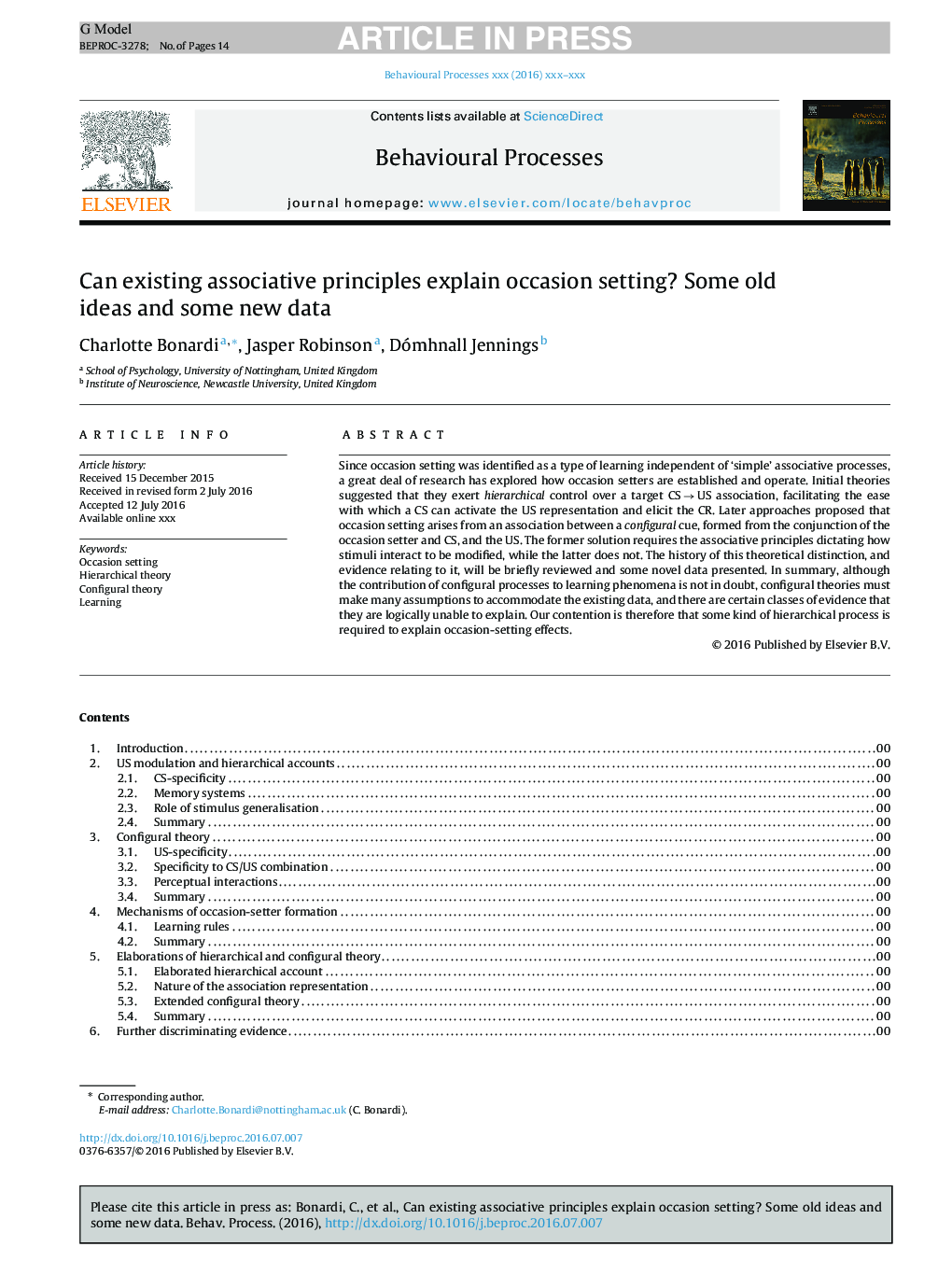| Article ID | Journal | Published Year | Pages | File Type |
|---|---|---|---|---|
| 5539798 | Behavioural Processes | 2017 | 14 Pages |
Abstract
Since occasion setting was identified as a type of learning independent of 'simple' associative processes, a great deal of research has explored how occasion setters are established and operate. Initial theories suggested that they exert hierarchical control over a target CS â US association, facilitating the ease with which a CS can activate the US representation and elicit the CR. Later approaches proposed that occasion setting arises from an association between a configural cue, formed from the conjunction of the occasion setter and CS, and the US. The former solution requires the associative principles dictating how stimuli interact to be modified, while the latter does not. The history of this theoretical distinction, and evidence relating to it, will be briefly reviewed and some novel data presented. In summary, although the contribution of configural processes to learning phenomena is not in doubt, configural theories must make many assumptions to accommodate the existing data, and there are certain classes of evidence that they are logically unable to explain. Our contention is therefore that some kind of hierarchical process is required to explain occasion-setting effects.
Related Topics
Life Sciences
Agricultural and Biological Sciences
Animal Science and Zoology
Authors
Charlotte Bonardi, Jasper Robinson, Dómhnall Jennings,
